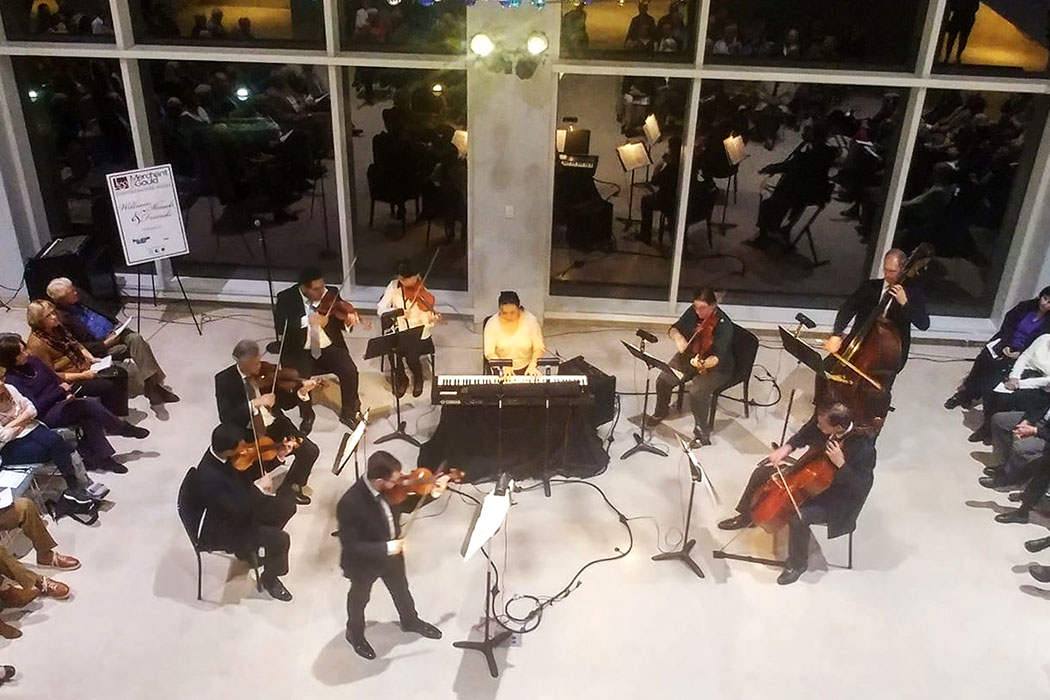Many Baroque composers are known for prolific output—J.S. Bach and G.F. Handel among them—but none so much as Antonio Vivaldi. His concerto output alone totals more than 500 works, yet none of these have been rewarded with modern ubiquity as has his The Four Seasons (La Quattro stagioni). In the 1970s and 80s, the recording industry drove the four-concerto work to a peak of familiarity that was not necessarily positive, leading to a flood of out-of-context usage as background music that swamped the work’s true satisfying nature.
For these reasons, there is quite the exhilaration in hearing Vivaldi’s The Four Seasons played live—and played brilliantly and properly as it was in last evening’s opening concert of the Knoxville Symphony Orchestra’s Concertmaster Series. Featuring concertmaster William Shaub and an octet of his orchestra colleagues, the ensemble performed two of the four concertos—“Autumn” and “Winter”. Thankfully, the instrumental complement was appropriately sized for the work, not just for the Knoxville Museum of Art space, but for the sake of probable authenticity. In the chamber music context, Shaub’s performance was full of Baroque passion, vitality, and energy, exquisitely rendered with refined details that escape one in recordings. The delicious dissonant perversity of “Winter” was worth the price of admission alone.
In an evening absolutely jam-packed with Baroque gems, Shaub completed the evening with Vivaldi’s Concerto for Two Violins in A minor, calling on violinist Sean Claire to join him as soloist. This was a marvelous ensemble performance, with Shaub and Claire giving the work a flawless focus and Baroque spirit. Their colleagues were Gordon Tsai, Edward Pulgar, and I-Pei Lin, violins; Kathryn Gawne, viola; Andy Bryenton, cello; Steve Benne, bass; and Emi Kagawa, harpsichord (electronic).
Gawne and Shaub opened the evening with the dual-attributed Handel-Halvorsen Passacaglia, a work derived from a movement from Handel’s Harpsichord Suite in G minor. The work was a feast for the pair, capturing the variations and their rhythmic energy with marvelous appearance of ease, despite the harmonic complexity that requires double and triple stops on each instrument.
In an evening that had no “lesser” works, and certainly no filler, Shaub and Kagawa also performed J.S. Bach’s Sonata No. 3 in E major for violin and harpsichord—then capped off the first half with a virtuosic adventure through Tartini’s Devil’s Trill.
Baroque lovers would do well to catch Shaub and friends in the final performance tonight at the Knoxville Museum of Art at 7:00 PM. This may well be a “Winter” you will long remember. Tickets and Information









What a revelatory concert! We have all heard the Seasons a million, sometimes unfortunate, times. Last night, it was all new to me. Schaub is doing a wonderful job with this series, and his playing at this concert was incredible. The one clinker was the use of a keyboard in place of a harpsichord. The timbre was not right, the volume was too low. At times it sounded like shopping center Christmas music was playing in the next room. Even with that shortcoming, this was one of the finest evenings of Baroque music I have ever experienced. Thank you, Will!